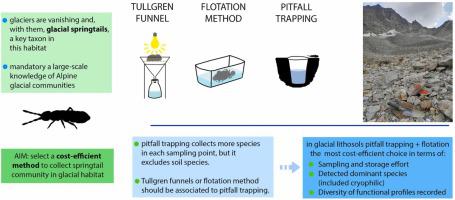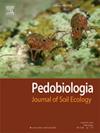Springtails (Hexapoda: Collembola) play a key role in biological community in glacial ecosystems and represent important ecological indicators in such threatened habitats. An effective sampling protocol for springtail community that optimizes sampling effort in the peculiar conditions of glacial lithosols is not available. We tested three sampling methods on the Sforzellina glacier (Central Italian Alps) in 21 sampling points. For each sampling point, we performed: 1. Tullgren funnels; 2. Flotation method; 3. Pitfall trapping. The potential effect of different sampling methods on species detection was evaluated by ANOVA and by N-mixture models for Flotation method and Tullgren funnels. The incidence coverage estimator (ICE) was used to test the performance of each sampling method comparing the observed vs estimated species richness. Our analysis showed that the sampling method affected the number of species and individuals recorded. Tullgren funnels collected the highest number of species, pitfall trapping the highest average number of species, but did not detect soil species. The observed/estimated species ratio was higher for pitfall trapping and Tullgren funnels than for flotation. The combination of pitfall trapping with Tullgren funnels or flotation method resulted optimal in terms of number of species and functional types recorded. Flotation method collected more than twice the number of specimens obtained with Tullgren, indicating a higher ability to extract springtails from mineral soil. Flotation method and Tullgren funnels detected the same community, from a functional point of view, but only flotation method collected all the most abundant species. These results indicate that a combination of pitfall trapping and flotation should be evaluated in order to maximize the obtained information in terms of specie assemblage composition and functional categories.



